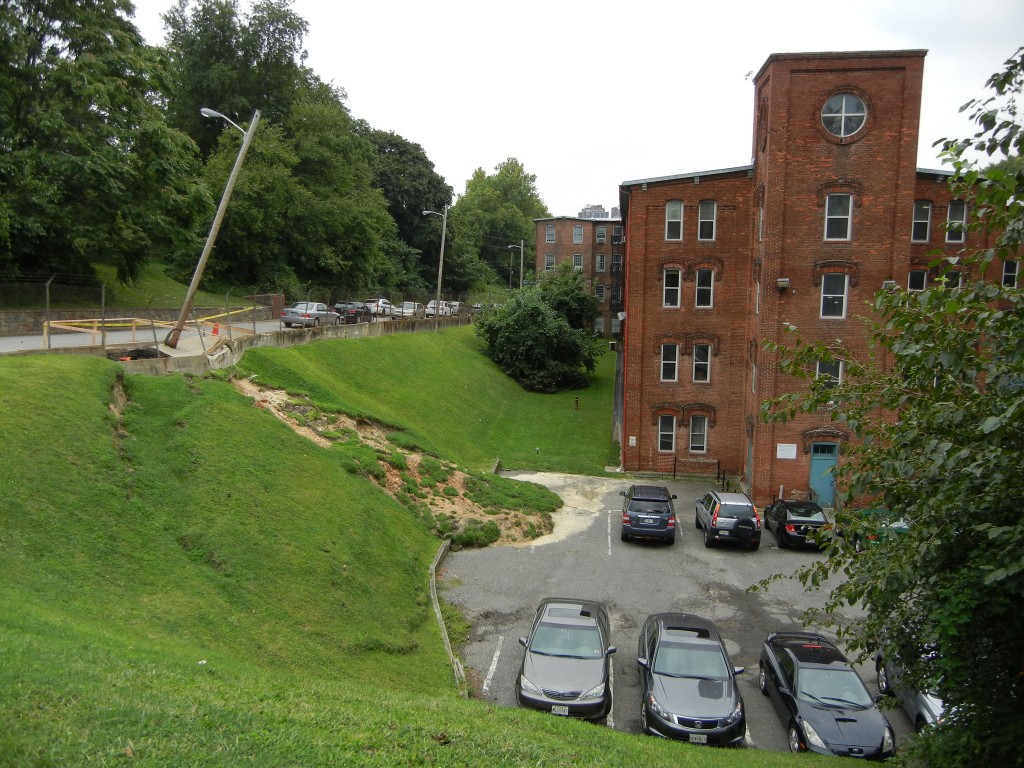 4/20: I write an email to a scientist. I explain that I work in an old building that sits in a sort of pit, partly surrounded by a hill. Midway along the hill is a little terrace on which is a street, and along the street, a sidewalk and a wire fence; and they’re all held in place by a retaining wall. The scientist is a hillslope geomorphologist. He knows about how water moves underground; how it percolates through soil of varied porosities and permeabilities; and how, pulled by gravity, it imperceptibly carries soil from one place to another. I suspect doom is unfolding. “I have an odd question for you,” I write.
4/20: I write an email to a scientist. I explain that I work in an old building that sits in a sort of pit, partly surrounded by a hill. Midway along the hill is a little terrace on which is a street, and along the street, a sidewalk and a wire fence; and they’re all held in place by a retaining wall. The scientist is a hillslope geomorphologist. He knows about how water moves underground; how it percolates through soil of varied porosities and permeabilities; and how, pulled by gravity, it imperceptibly carries soil from one place to another. I suspect doom is unfolding. “I have an odd question for you,” I write.
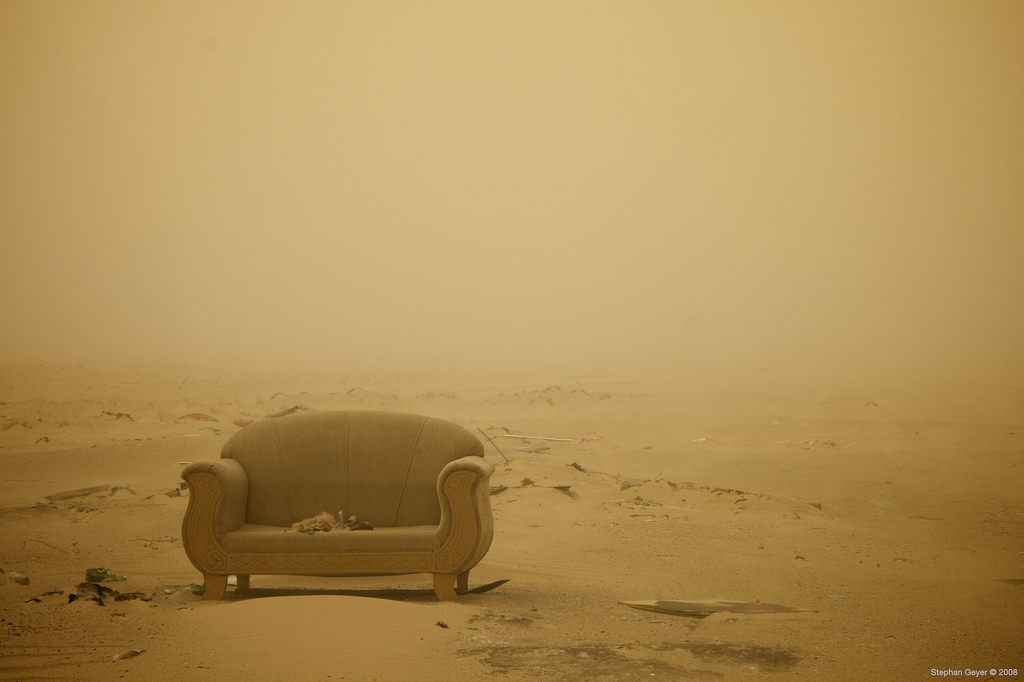 As someone preoccupied with odd, mysterious places, I have a longstanding appreciation for an odd, mysterious organization called The Center for Land Use Interpretation. Equal parts arts organization, archive, and amateur detective agency, the Los Angeles-based CLUI (rhymes with gooey) runs bus tours of the Nevada Test Site, mounts exhibitions of hurricane-racked vacation properties on Gulf Coast barrier islands, and otherwise investigates our curious relationship with the ground beneath our feet.
As someone preoccupied with odd, mysterious places, I have a longstanding appreciation for an odd, mysterious organization called The Center for Land Use Interpretation. Equal parts arts organization, archive, and amateur detective agency, the Los Angeles-based CLUI (rhymes with gooey) runs bus tours of the Nevada Test Site, mounts exhibitions of hurricane-racked vacation properties on Gulf Coast barrier islands, and otherwise investigates our curious relationship with the ground beneath our feet.
In August, the CLUI crew and the Albuquerque-based Institute of Marking and Measuring organized a tour of the centers of the USA. Centers isn’t a typo: it turns out that visiting the exact middle of the country involves at least a few stops and a hell of a lot of trouble.
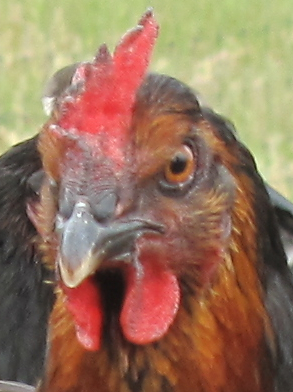 Have you ever looked at a chicken? I mean really looked, and not the kind that comes safely shrink-wrapped in a Styrofoam tray? There’s something in the eyes, something still-wild, almost menacing—no, really menacing. Given a little room to move around and enough conspecifics to elicit social behaviors, the animals are aggressive, territorial, and relentlessly voracious. If you spend much time around the birds, you start to feel grateful for our size advantage. These are, after all, the living descendents of dinosaurs.
Have you ever looked at a chicken? I mean really looked, and not the kind that comes safely shrink-wrapped in a Styrofoam tray? There’s something in the eyes, something still-wild, almost menacing—no, really menacing. Given a little room to move around and enough conspecifics to elicit social behaviors, the animals are aggressive, territorial, and relentlessly voracious. If you spend much time around the birds, you start to feel grateful for our size advantage. These are, after all, the living descendents of dinosaurs.
And yet … there’s something a little underwhelming about the whole birds-are-dinosaurs thing. Living birds, chickens included, share thousands of traits with their extinct forebears. But there’s a certain chill-inducing it-factor that even the most dangerous modern birds just don’t have. One imagines it must be a little like hanging out with Muhammed Ali nowadays, or George Foreman. It would be great—fascinating, inspiring even. But nowhere near as awesome as being around them back in their prime, when they were huge, lethal and unpredictable. Continue reading
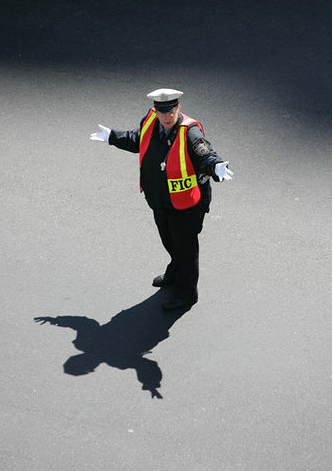 The news of a detection of faster-than-light speed neutrinos by the OPERA experiment stunned the physics and astronomy community last week. I read the paper, and I listened to the talk from Geneva over the Web. This is seriously weird stuff! Faster-than-light speed neutrinos!? The talk was filled with wonderfully arcane geodetic methods for measuring the line-of-sight difference between a proton beam in Geneva and a cave in Italy 730 kilometers away. We experimentalists eat this stuff up. It is so cool to say you can measure the underground distance to an accuracy of 20 centimeters over such a distance, just like it is cool to say that we can measure the changing distance to the Moon to a millimeter or so.
The news of a detection of faster-than-light speed neutrinos by the OPERA experiment stunned the physics and astronomy community last week. I read the paper, and I listened to the talk from Geneva over the Web. This is seriously weird stuff! Faster-than-light speed neutrinos!? The talk was filled with wonderfully arcane geodetic methods for measuring the line-of-sight difference between a proton beam in Geneva and a cave in Italy 730 kilometers away. We experimentalists eat this stuff up. It is so cool to say you can measure the underground distance to an accuracy of 20 centimeters over such a distance, just like it is cool to say that we can measure the changing distance to the Moon to a millimeter or so.
Immediately all scientists began to play with this concept. It is one of the most fun things in science—to be liberated from whatever fussy Standard Model we have, and be allowed to explore a possible new direction for our ideas and experiments.
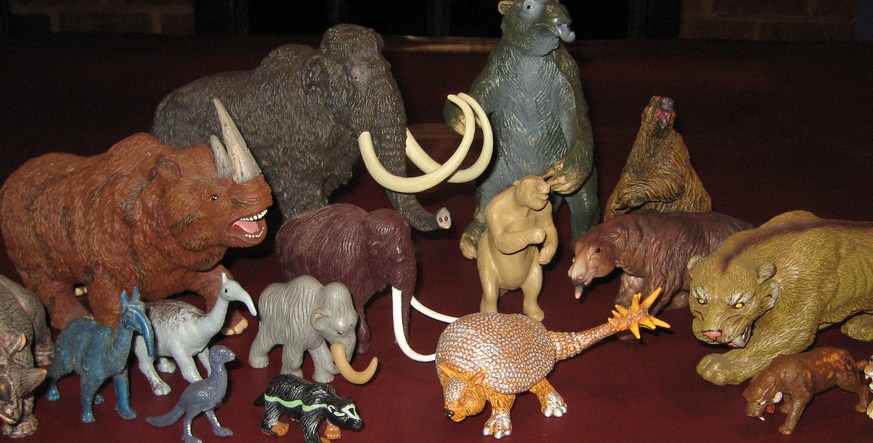 In 2000, the last Pyrenean ibex died. These were mountain goat-like mammals with fierce black horns that scampered around the Pyrenees Mountains between France and Spain. Some cells had been taken from that last animal, and in 2009 the world learned that scientists had been able to clone the creature: a Pyrenean ibex kid was born to a surrogate mother, a hybrid between Spanish ibex and a domestic goat. (see the paper here.) The kid was delivered by cesarean section. It opened its eyes, stuck out its tongue, moved its legs about, and promptly died of lung abnormalities. Continue reading
In 2000, the last Pyrenean ibex died. These were mountain goat-like mammals with fierce black horns that scampered around the Pyrenees Mountains between France and Spain. Some cells had been taken from that last animal, and in 2009 the world learned that scientists had been able to clone the creature: a Pyrenean ibex kid was born to a surrogate mother, a hybrid between Spanish ibex and a domestic goat. (see the paper here.) The kid was delivered by cesarean section. It opened its eyes, stuck out its tongue, moved its legs about, and promptly died of lung abnormalities. Continue reading
 When William Gibson coined the term cyberspace in 1984 in the book Neuromancer, he described it as “a consensual hallucination experienced daily by billions of legitimate operators in every nation.”
When William Gibson coined the term cyberspace in 1984 in the book Neuromancer, he described it as “a consensual hallucination experienced daily by billions of legitimate operators in every nation.”
Decades later, Gibson declared that cyberspace was everting. Which is to say, entering the next phase of its evolution by creeping out of the virtual boundaries that once defined it and into what we consider “real life.” Sure enough, about 5 minutes later, the world proved him right, again, and the Internet of Things began to erode the distinction between the virtual and the real.
Most descriptions of the possibilities of the Internet of Things have centered on things like RFID-tagged Starbucks cups that let the company trace your steps through its corporate universe, both real and virtual. Usually the first groups of people to find anything useful to do with new technology are marketers and the military.
But earlier this week, a study out of Nottingham Trent University and Stockholm University hinted at what I think is the real potential of the internet of things: imbuing plain vanilla reality with an extra, shared dimension. Moving our consensual hallucination into reality. Continue reading
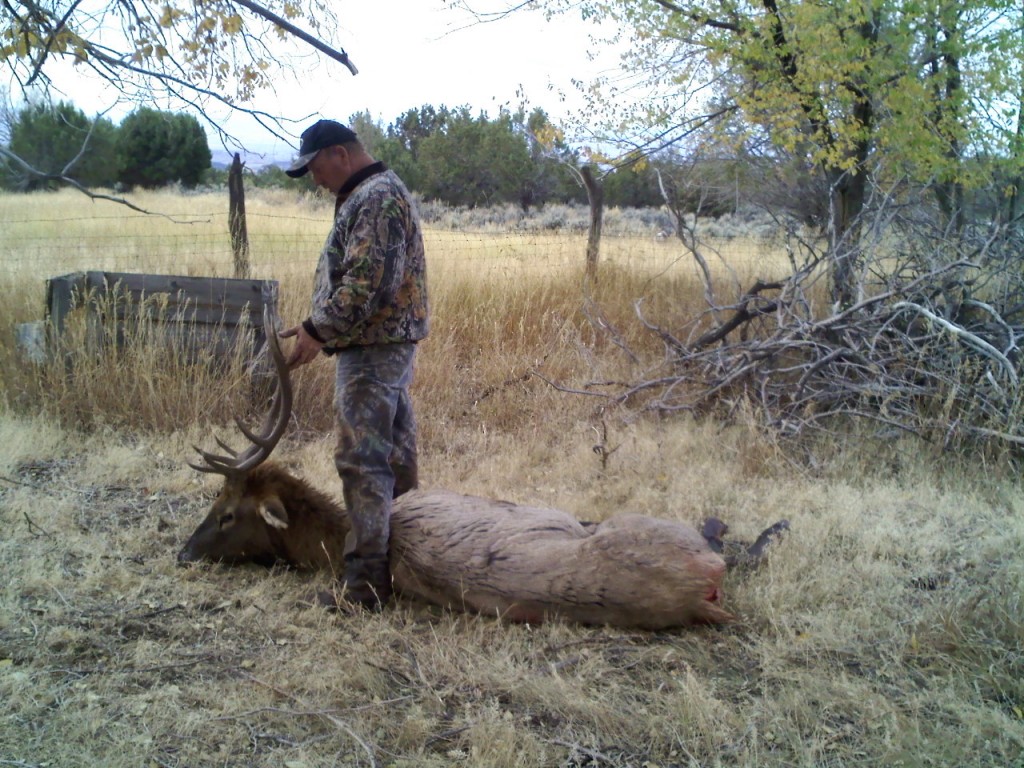 I don’t like guns. I’m almost universally opposed to killing things. So why then, did I spend a recent weekend learning how to handle a shotgun and rifle? What possessed me to take the hunter safety exam necessary for obtaining a hunting license? Continue reading
I don’t like guns. I’m almost universally opposed to killing things. So why then, did I spend a recent weekend learning how to handle a shotgun and rifle? What possessed me to take the hunter safety exam necessary for obtaining a hunting license? Continue reading
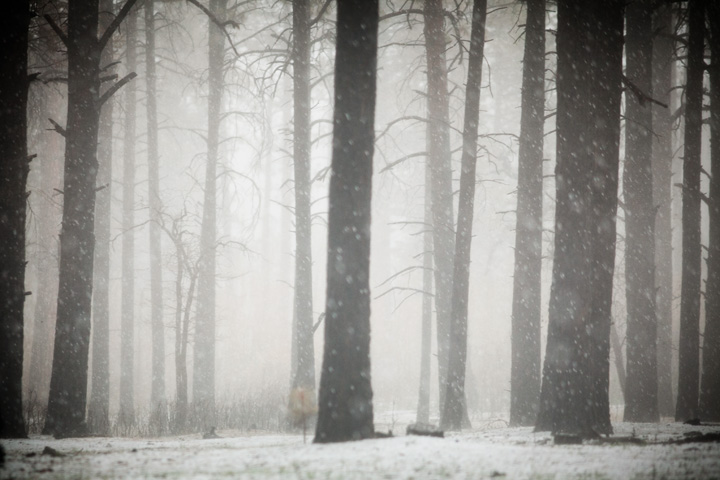 As journalists, we are trained to be neutral, to never betray any hint of bias or emotion. There are exceptions, of course — the 9/11 tragedy was so universally devastating, and so deeply unfathomable, that journalists were permitted to show a sense of loss — in fact, it would have been unthinkable not to.
As journalists, we are trained to be neutral, to never betray any hint of bias or emotion. There are exceptions, of course — the 9/11 tragedy was so universally devastating, and so deeply unfathomable, that journalists were permitted to show a sense of loss — in fact, it would have been unthinkable not to.
But for most of the events and issues we write about, we typically take a one-night-stand approach to our stories: Research the topic, talk to as many knowledgeable people as possible, maybe visit the epicenter of the debate/discovery/crisis, write the story, and then move on to the next one.
But this past summer, after the massive Las Conchas fire swept through my beloved Jemez Mountains, about an hour-and-a-half north of Santa Fe — and visible from some parts of town — something changed. Continue reading